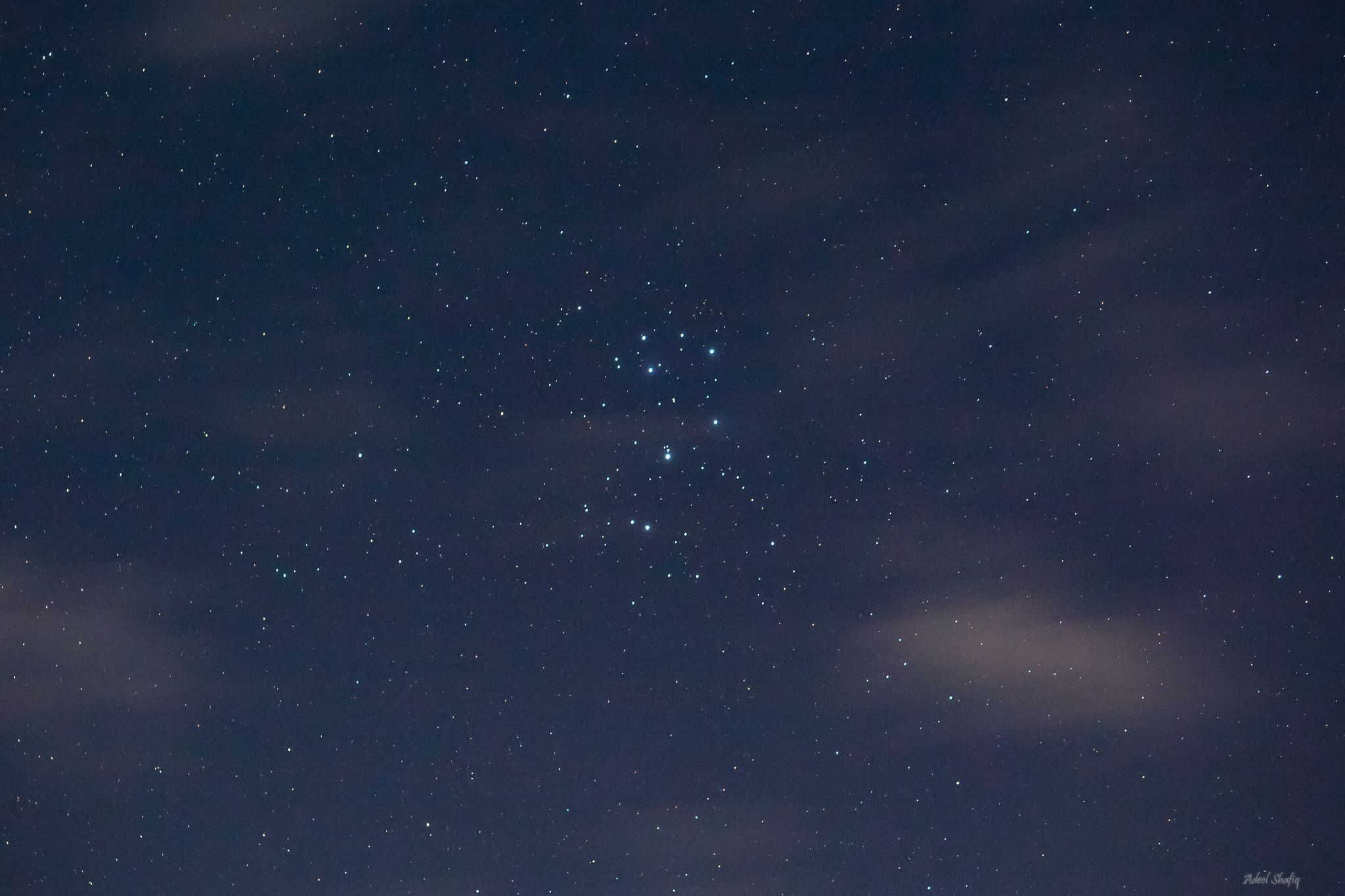EarthSky Community Photos
Submit your photo here. Comment or upvote on photo pages. Search via photographers' names. More improvements coming! To help, please donate.

Lahore, Punjab, Pakistan
11:50 pm
Canon EOS 1300D
Samyang 135mm f2 lens
Ioptron sky tracker mini
Single tracked exposure of 30 seconds at f2.8
Post processing done in PS 23
Pleaides - The Most Famous Star Cluster
Captured Pleaides from the skies of Lahore a couple of nights ago on a very clear night. Pleaides is also known as Seven sisters, Al Thurayya, Parvin, Matarii, Hen and her chicks, Sieve, Subaru, Ülker, Mao or Moroporo which are a few names from across the globe.
Sometimes called the Seven Sisters, the Starry Seven, and the Seven Atlantic Sisters, the stars of this small dipper-shaped cluster take their names from the ancient Greek god Atlas, his wife Pleione, and their seven daughters.
As such a prominent star cluster, one that lies near the ecliptic, the Pleiades has been known since the dawn of history by cultures all over the world. A study of the mythologies based on these stars and their appearance in literature around the world make for fascinating reading. Some examples:
- Polynesian peoples called them matarii or matariki (“little eyes”) and held they were once a single star split into six during a battle among the gods.
- Medieval northern European cultures, including the Vikings, presumably occupied with the essentials of life rather than poetry, called them the ‘Hen and her Chicks’.
- Finnish and Lithuanian stargazers saw them as a sieve or net (in Tolkien’s The Hobbit, they were called “The Netted Stars”)
- In Japan, these stars were called subaru, which means unity (the Subaru car company was named when five smaller firms merged into a larger sixth firm, Fuji Heavy Industries).
- In Arabic the Pleiades are known as al-Thurayya الثريا, and is mentioned in Islamic literature. Some scholars of Islam suggested that the Pleiades are the "star" mentioned in Sura An-Najm ("The Star") of the Quran.
- The name was borrowed into Persian and Turkish as a female given name, and is in use throughout the Middle East (for example Princess Soraya of Iran and Thoraya Obaid).
- It eponymises the Thuraya satellite phone system of the United Arab Emirates.
- In Farsi the Pleiades is primarily known as Parvin (pronounced "parveen"). It too is a common given name of Iranians, Afghanis and some Pakistanis.
- To the Ban Raji people, who live semi-nomadically across western Nepal and Uttarakhand, the Pleiades are the "Seven sisters-in-law, and brother-in-law" (Hatai halyou daa Salla).
- In Chinese constellations they are 昴 mao, the Hairy Head of the white tiger of the West.
- The cluster, known as Bintang Tujuh ("seven stars") or Bintang Puyuh ("sparrow stars") in Malay.
- In the Philippines the Pleiades are known as "Moroporo", meaning either “the boiling lights” or a flock of birds.
And the list goes on 😅 bottom line is that Pleaides has a significant value in almost every culture of the world and it has been an important star formation which holds significance since the earliest humans.








